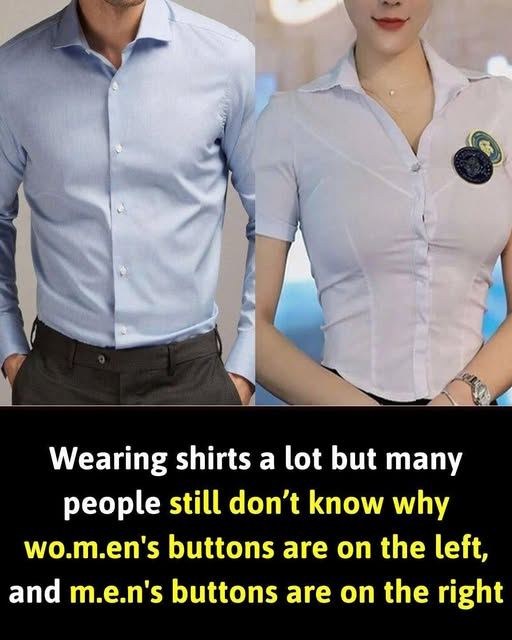Tiny detail on shirt sets men apart from women
Fashion rules are becoming more fluid these days – what was once specific to men or women is now up for grabs. But there’s one small detail that still sets men’s and women’s clothing apart, and some historians suggest it’s a centuries-old tradition that’s deeply rooted in gender inequality.
The next time you button up your shirt, take a quick look at where the buttons fall on the placket – the reinforced strip of fabric where the button meets the buttonhole. Now, if you happen to have access to a shirt from someone of the opposite gender, take a close look and see if you notice the difference.
Women’s buttons are typically on the left, while men’s are on the right.
The exact origins of the quirky opposite-button design have been lost over time, but experts do have some theories.
Lady’s maid
One of the most widely accepted reasons goes all the way back to when wealthy women didn’t dress themselves. Upper-class ladies often had maids to help them get dressed, and since most people were right-handed, buttons were placed on the left to make it easier for the maid to fasten them up.
“When buttons were invented in the 13th century they were, like most new technology, very expensive,” Melanie M. Moore, founder of womenswear brand, told Today. “Wealthy women back then did not dress themselves – their lady’s maid did. Since most people were right-handed, this made it easier for someone standing across from you to button your dress.”
Meanwhile, men – who usually dressed themselves – had buttons on the right, which was more practical for a right-handed person.
Ready for battle
Other experts suggest that men’s clothing was designed for battle.
Back in the day, many men carried weapons (like swords or pistols) and needed easy access. Since “access to a weapon…practically trumped everything,” having buttons on the right made it easier to unbutton jackets or coats while keeping their dominant hand free for action, Chloe Chapin, fashion historian told Today.
“I think it’s important to question which time period we’re talking about,” Chapin, a Harvard doctoral candidate in American studies, started. “But as a general rule, many elements of men’s fashion can be traced back to the military.”






